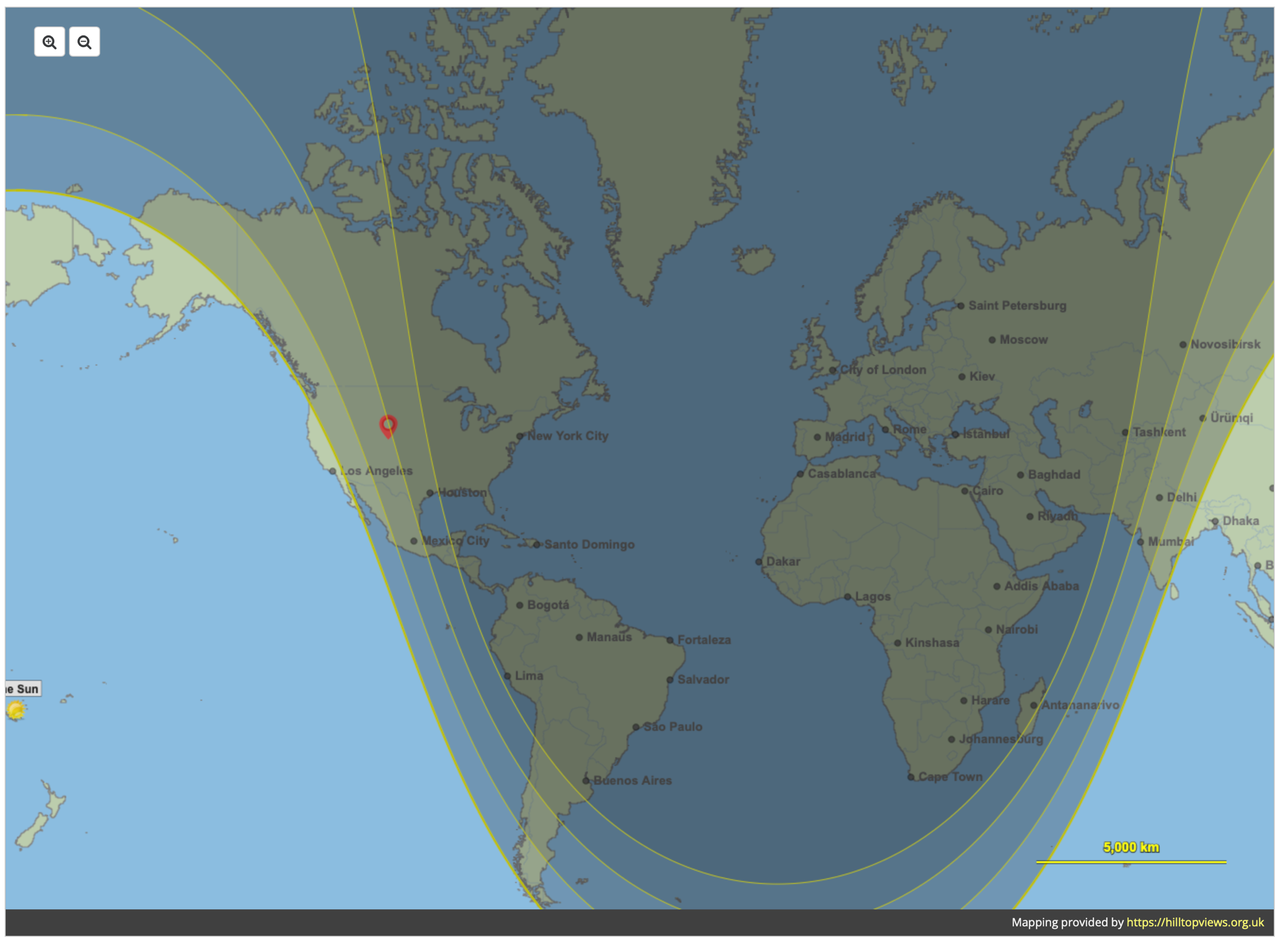Hi Ron — See attached image of the twilight zones at 00:40Z today. You will see that 3B9 is in the middle (nautical) twilight zone band… and the twilight zones cross North America. Having worked this path myself from 3B9, I can testify to how cool it is. Ducting explains part of why the signal was so loud when you heard them — ducts are very low loss conduits for signals at the ducting frequency range. But escaping from a duct requires the signal to encounter some less-ionized part of the floor of the duct, so that the signal can continue down toward the earth’s surface. And the exit point still has some refraction, so the signal may exit the duct at a very shallow angle and travel a long way before it reaches the surface. These thin spots are indeed spotty, transient, and move around. When I was on 3B9, clumps of geographically-adjacent stations would get worked — a spot corresponding to a weak spot in the duct. Some clumps were clearly connected to each other by an added ionospheric hop in the normal way. We could plot this clumps over time and see them move along with the terminator… but eventually (minutes or tens of minutes) a particular “leak” would close up. Maybe we had several “leaks” at one time, working different spots in North America… and sometimes no leaks at all. So yes — spotlight propagation. This emphasizes why it’s important for a DXpedition to be on top band every night. Some nights will have no ducts. Others with have leaky ducts — but the leaks will only illuminate certain patches of North America (in this case)… and on another night different patches of North America. To give everyone a chance, one has to be on every night. And for the person chasing the DX, one has to be listening every night until a leak/spot favors that person’s location. And then, as you experienced, it’s super easy to work each other through that low-loss path. — Eric K3NA > On Nov 21, 2024, at 19:37, Ron Spencer via Topband <topband@contesting.com> > wrote: > > Tonight (11/21) around 0040Z I saw a signal pop up on the panadapter. Tuned > to it and its 3B9/M0CFW calling CQ. 15dB or more above my noise floor. I > couldn't believe how solid and loud they were. After amp came on line I > called and worked them. During the wait time I did a quick internet search to > see if is indeed a real station. Yep. > > What amazed me, and still does, is absolutely NO rbn or packet spots during > the at least 5 minutes they were on. And no other callers. Even after I > spotted them on packet and the kst chat page. > > I have no explanation for this. Why no rbn spots? Why no other callers when > they were very solid for almost the whole time they were calling CQ? Was > this an example of very small spot light prop? There were others on so its > not like no one was tuning the band. Baffling. > > Below is a screen shot of their signal. they are in the red area. Received on > my homebrew 8 antenna circle array with no preamp. > > Perhaps someone out there has an explanation. > > Ron > > N4XD > Sent using https://www.zoho.com/mail/ > _________________ > Searchable Archives: http://www.contesting.com/_topband - Topband Reflector _________________ Searchable Archives: http://www.contesting.com/_topband - Topband Reflector |
